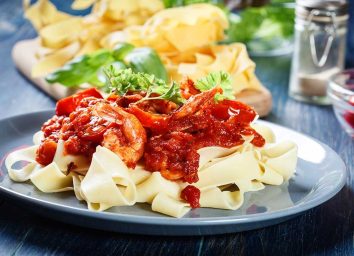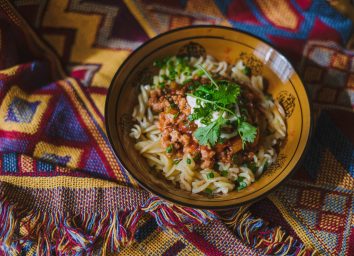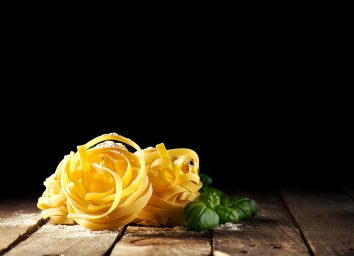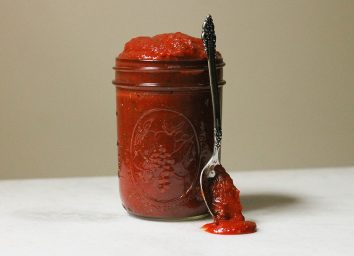The Worst Dish You Should Never Order at an Italian Restaurant
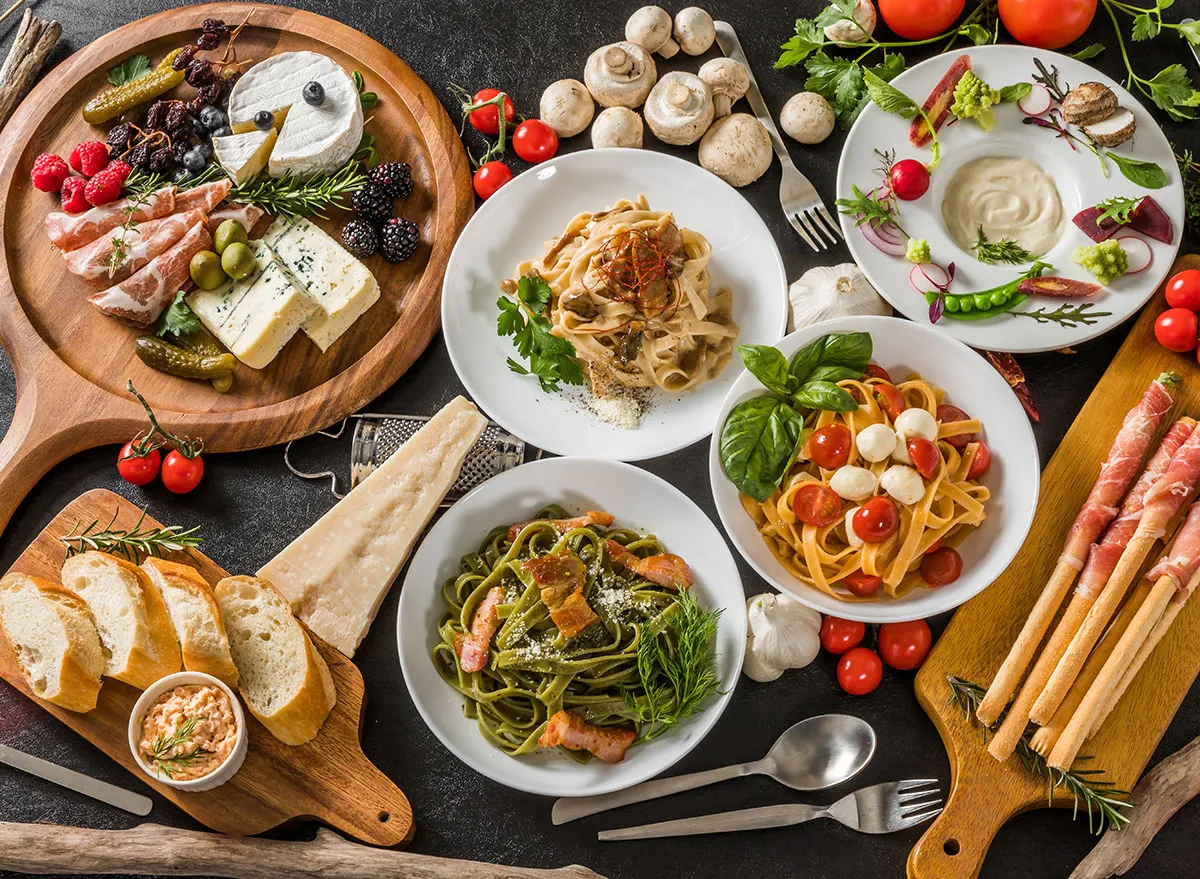
Considering the word "mangia" meaning "eat" is the anthem of Italian culture, it's sometimes hard not to overindulge when dining out, feasting on the beloved cuisine. There's a common stereotype that when it comes to Italian, you eat delicious food—but a lot of it at one time. That said, it's important to be conscious of what you're choosing to consume to avoid high calorie, fat, and sodium intake. And there's one dish that's truly the worst to order from an Italian restaurant.
So what should you avoid ordering?
We checked in with Amy Tao, MS, of Based Wellness to educate us on the worst possible dish you should never order at an Italian restaurant. While she recommends eliminating sausage from pasta or pizza dishes and avoiding starters like mozzarella sticks and fried calamari because of the high sodium and fat content, the nutritionist says there is one popular dish you should really stay away from at an Italian restaurant. Additionally, there's another problematic ingredient lurking on Italian restaurant menus you'll want to steer clear of as well. (And while you're making healthier choices, be sure to stock up on The 7 Healthiest Foods to Eat Right Now!)
Without further ado, the worst dish you should never order at an Italian restaurant is…
Chicken Parmesan
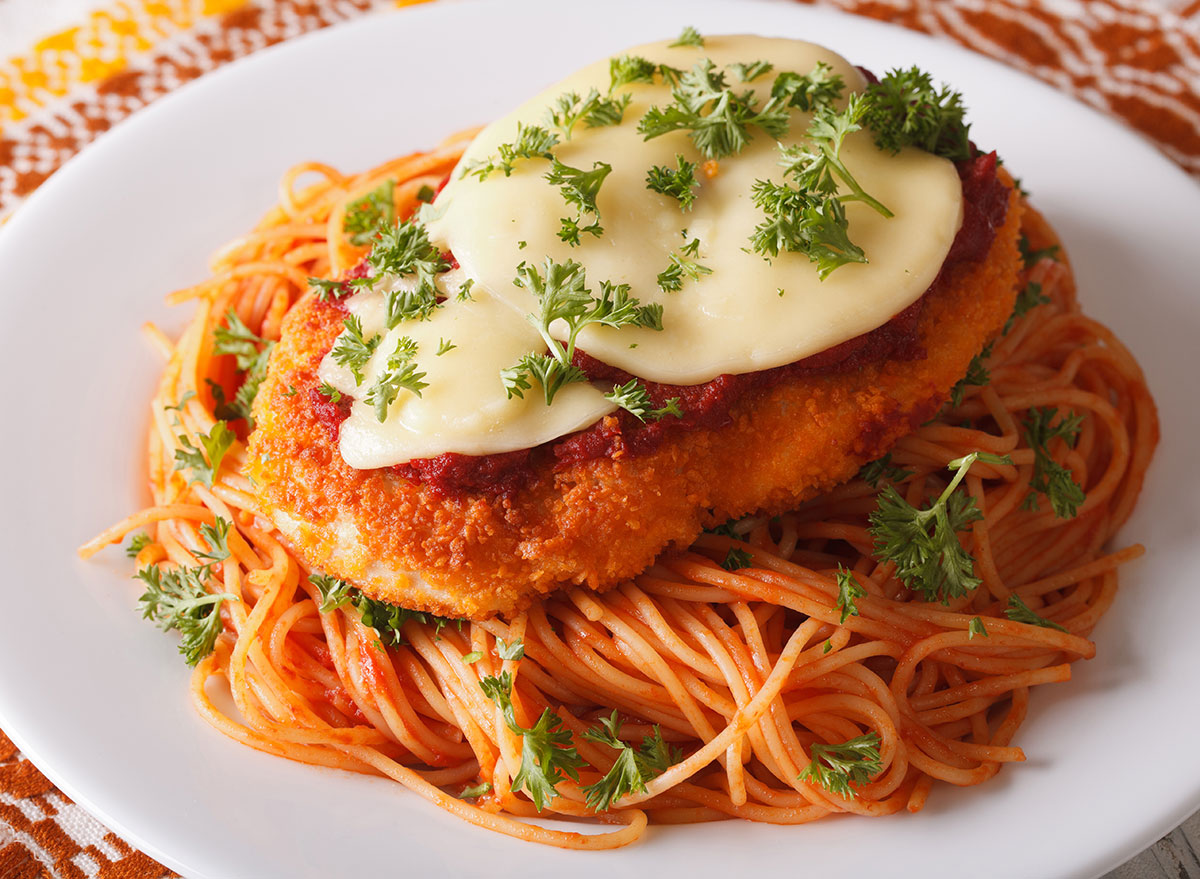
According to Tao, the scrumptious breaded chicken—usually smothered with marinara sauce and cheese and served with a side of pasta—is the meal that should be avoided. (If you're looking for some more help navigating menus, your ultimate restaurant and supermarket survival guide is here!)
"While we often talk about things like fats when we think 'unhealthy,' we also need to consider other crucial components of a food's nutritional makeup—like the sodium, salt, and fiber contents," she said.
She highlighted that at the popular chain restaurant Olive Garden, the Giant Chicken Parmigiana contains 1,780 calories, 43 grams of saturated fat, 1 gram of trans fat, and a whopping 4,560 milligrams of sodium. The regular Chicken Parmigiana dish isn't much better, as it comes in at more than 1,000 calories and has 2,980 milligrams of sodium.
"This one dinner, without any appetizers, dessert, or drinks, contains what would be a day's worth of calories for most people and about two days' worth of sodium!" Tao said.
A similar version of the dish served at the Romano's Macaroni Grill contains slightly fewer calories and significantly less sodium, but is still high in sodium for one meal at 1,890 milligrams, she pointed out. A peek at the Maggiano's menu reveals a Chicken Parmesan dish that contains 3,070 milligrams of sodium.
"And forget the Veal Parmesan, which is the same dish with veal in place of chicken, as it comes in at barely under 5,000 mg of sodium!" the expert said.
The biggest trend seen amongst this classic dish at these frequently-visited restaurants is the high sodium content.
"According to the CDC, the majority of the sodium we consume comes from processed and restaurant foods," Tao said. Consuming too much sodium, unfortunately, has an inverse relationship with blood pressure levels, per the CDC.
"Those with elevated blood pressure levels at 130/80 or higher are considered to have hypertension and are at an increased risk for heart disease and stroke," she said. "As of 2017, almost half of all adults in the United States had hypertension or were being treated with medication for hypertension."
But this isn't the only dish you need to be wary of. That's right, there's another culprit lurking on the menus at Italian restaurants…
Alfredo Sauce
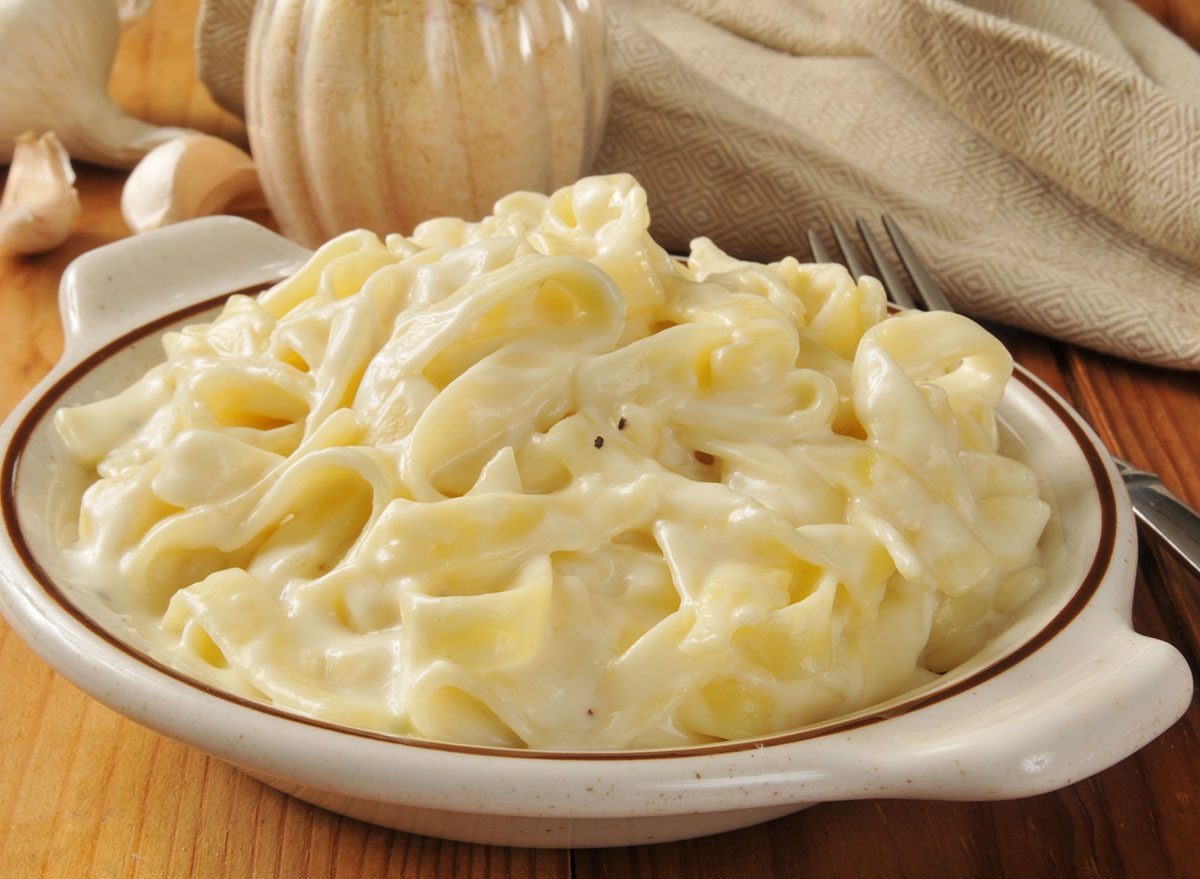
Alfredo sauce—which is loaded with butter, heavy cream, and cheese—is delicious over pasta like fettuccine and even more yummy with chicken. But it's far from a healthy choice due to the high sodium, fat, and calories, Tao explained.
For example, Maggiano's Fettuccine Alfredo contains 1,430 calories, 79 grams of fat, 40 grams of saturated fat, and 4,310 milligrams of sodium, OIive Garden's version of the dish contains 1,010 calories, 56 grams of fat, 34 grams of saturated fat, and 850 mg of sodium, and Romano's Macaroni Grill version contains 1,040 calories, 59 grams of fat, 36 grams of saturated fat, and 1,630 milligrams of sodium. "All of these versions contain up to or more than a day's worth of calories!" she said.
These dishes are also high in saturated fats, which are not essential to our diet as they've been linked to an increased risk of coronary heart disease and ischemic stroke, according to a 2017 study.
"While new studies are coming out with updated information that may contradict some of the long-held thoughts regarding the negative implications of saturated fats on a consumer's health, it is still safe to say that many saturated fats are better off being replaced with polyunsaturated fats," Tao said. "Consuming polyunsaturated fatty acids has been shown to slightly reduce the risk of heart disease and combined heart and stroke events."
What should you eat at an Italian restaurant instead?
Don't let these unhealthy choices deter you from experiencing the beauty of Italian cuisine. Believe it or not, there are plenty of healthy options too. "Opt for shrimp cocktail, steamed mussels or clams, a broth or tomato-based soup like minestrone, or a green salad to start," Tao said for the appetizer course.
"For your entrée, enjoy a vegetable-based sauce, such as marinara sauce, and when choosing the addition of a protein, avoid those that have been fried and opt for a grilled or baked chicken or fish option," she continued in regards to the main course. "Choose grilled or steamed vegetables and if you are craving pasta, just order a small side of it."
While it's difficult to control the way things are prepared when you are dining out, you can ask for simple modifications.
"When you are ordering your protein or veggies and watching your salt intake, ask if they can be cooked without salt and season your own food when it comes out," Tao said. "Additionally, you could also ask for them to use olive oil rather than butter."
Keep these tips in mind and you'll be able to make smarter choices next time you treat yourself to some classic Italian food.
